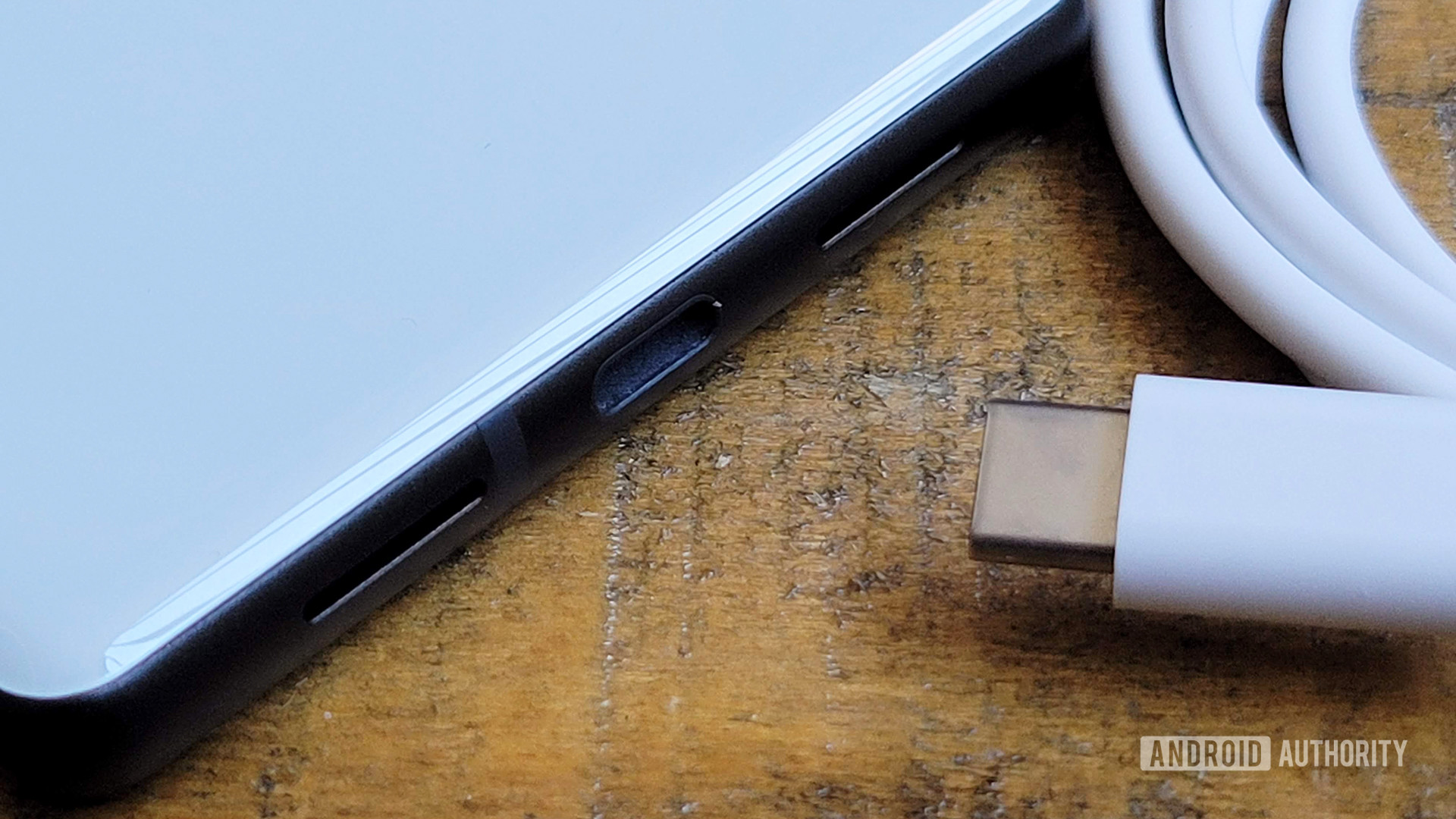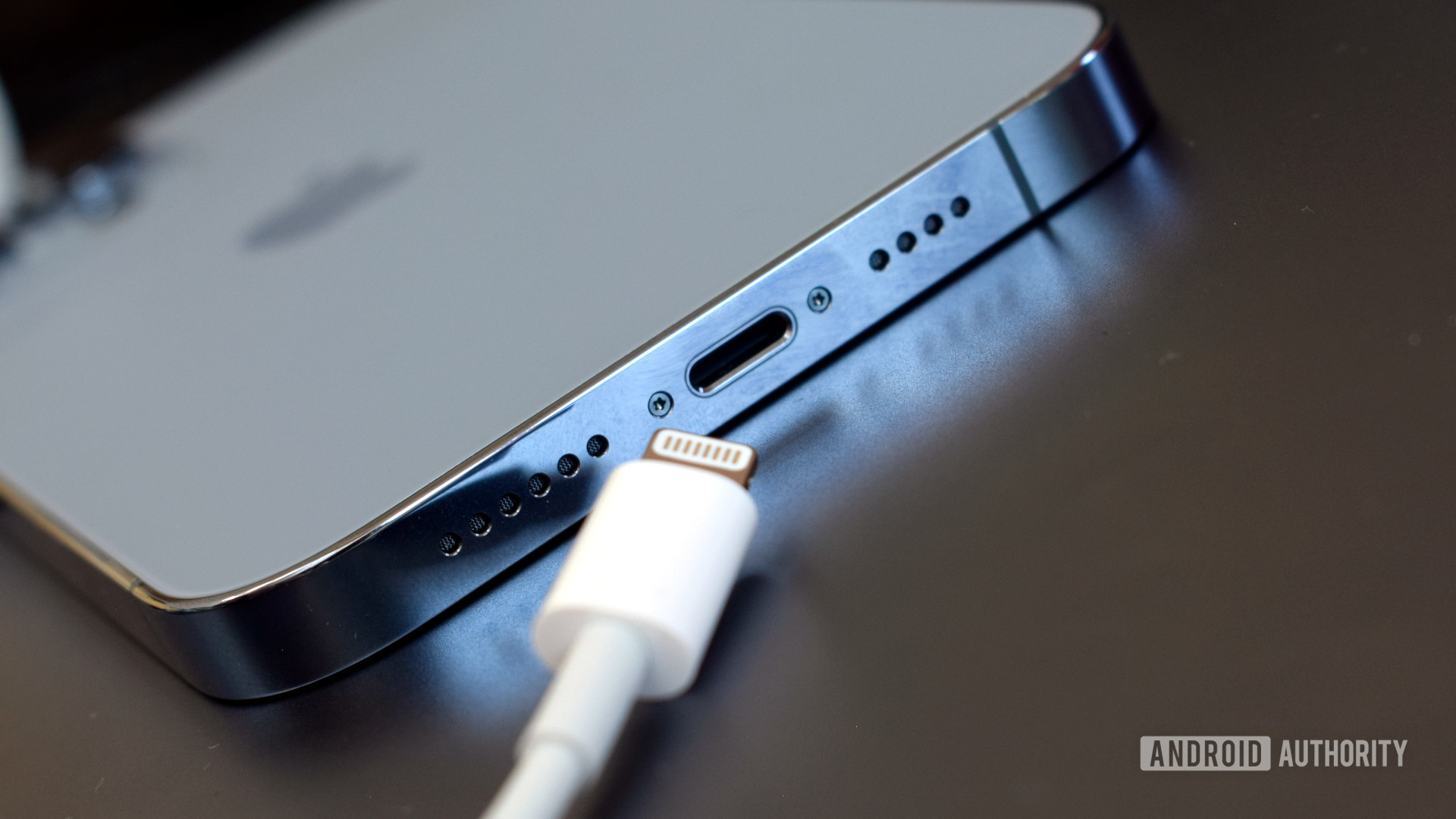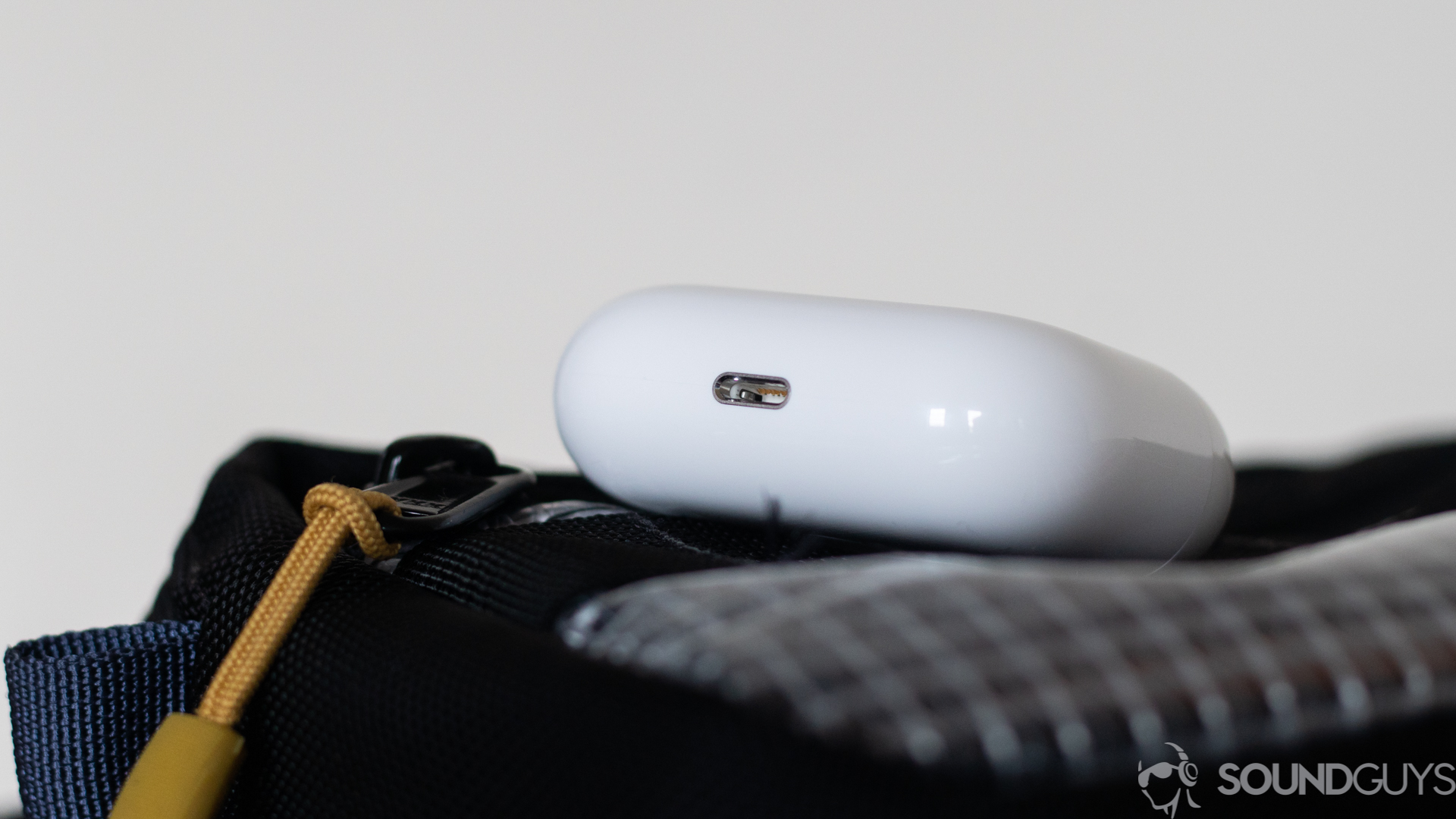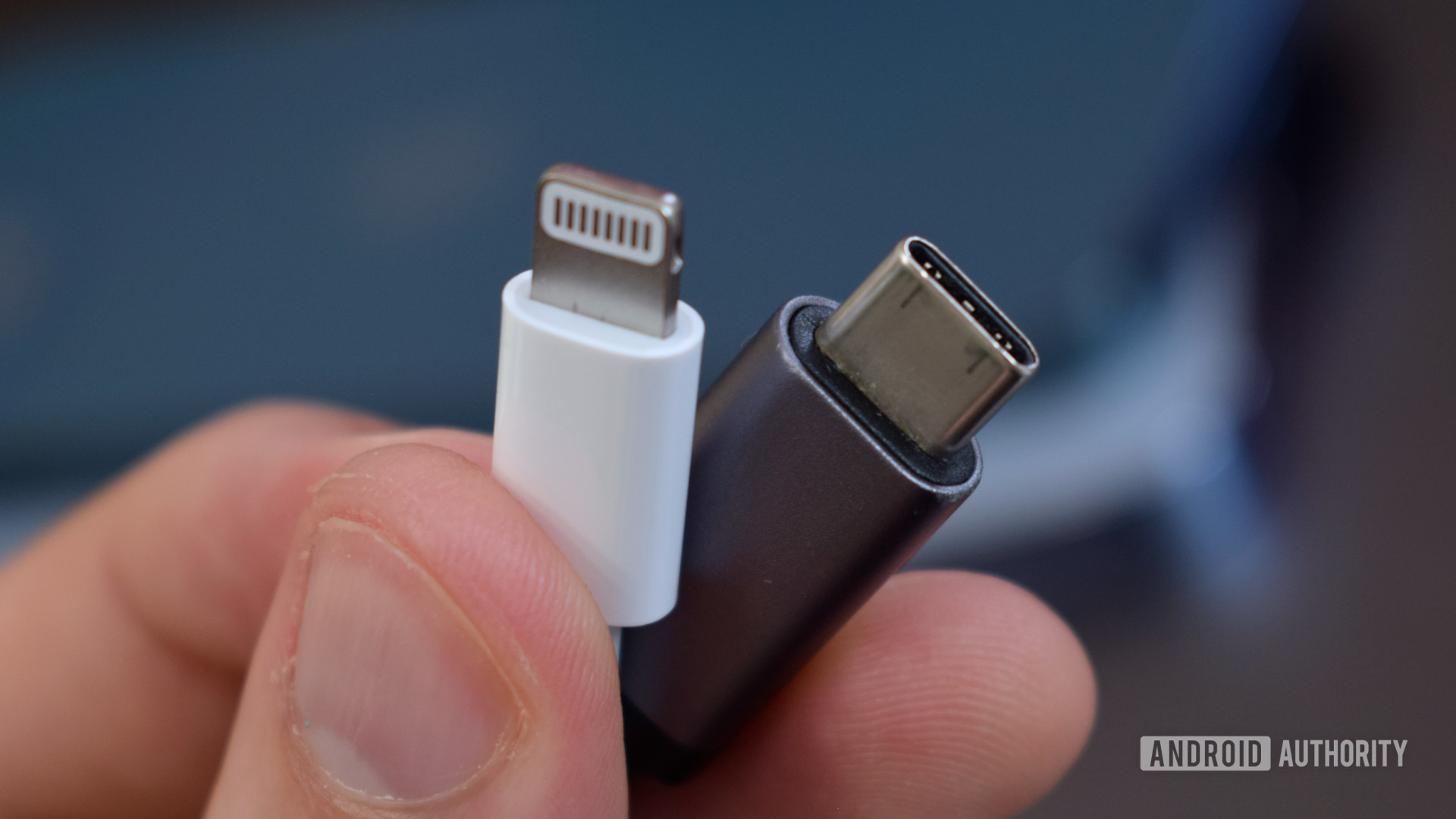
C. Scott Brown / Android Authority
Officials within the European Union are hoping to mandate charging standards, and Apple, predictably, isn’t happy about it. Under a floated European Commission proposal, USB-C would become the only standard for wired smartphone charging, since proprietary formats like Apple’s Lightning prevent people from reusing cables and many other accessories. In fact, the initiative would cover more than just phones — headphones, portable speakers, and tablets are just some of the other targeted devices.
In protest, Apple claims that the proposal would stifle innovation, but that was shot down by Anna Cavazzini, the chair of the European Parliament’s consumer protection committee, who pointed out that if something better than USB-C emerged, the rules would adapt. It’s not like Apple is facing an imminent threat either, since standardization would come into force in 2024 at the earliest.
There really doesn’t seem much hope of Apple swaying EU officials, and it’s for the better of the tech industry. The company is fighting a losing battle — particularly because there are few good reasons to cling to Lightning.
Lightning vs USB-C: The tide is turning

Robert Triggs / Android Authority
To begin with, Apple itself is slowly abandoning the format. The iPhone 13 lineup now represents the company’s only flagship products equipped with a Lightning port. Every iPad except for the 10.2-inch “budget” model has switched to USB-C, helping to bolster their laptop replacement credentials. You can still find Lightning on audio-related products like AirPods, the iPod touch, and the Powerbeats Pro, but gear like the Beats Flex and Beats Studio Buds have made the switch. That’s probably because the Beats brand caters to both iOS and Android users, and the latter has come to expect USB-C.
On a technical level, the reasons to cross over are obvious. Device and connector improvements have barely kept Lightning relevant. Via a Lightning-to-USB-C cable, you can charge an iPhone 13 at up to 25W — more than the Pixel 5’s 18W, for example — but Apple hasn’t said if Lightning is capable of more. Android phones regularly support at least twice that wattage over USB-C. The Xiaomi Mi Mix 4’s charger is rated at a crazy 120W, meaning owners can do a full recharge in as little as 21 minutes, and that’s without Boost Mode on. The USB Promoter Group has already greenlit charging up to 240W for future USB-C devices and cables.
The iPhone’s Lightning port is slower to charge and transfer data than USB-C equivalents.
When it comes to data, even the fastest Lightning ports are limited to USB 3.0 speeds, and some may still be at 2.0. We’d know for sure if Apple was more forthcoming with tech specs. At the 3.0 level that’s still a cap of 5Gbps or less, versus the 10Gbps on many dedicated USB-C connections. Some USB 3.2 devices are now reaching 20Gbps, and if you’re lucky enough to have USB 4, the ceiling is 40Gbps.
Nothing illustrates the absurdity of Apple’s position more than the iPhone 13 Pro. 256GB storage models will soon be able to shoot video in the Apple ProRes codec, popular for TV- and cinema-quality work. Yet iMore notes that in 4K HDR, a single minute of ProRes consumes 6GB — for 30 minutes of footage, you’re talking upwards of 50 minutes to transfer it to a Mac or PC at USB 2.0 speeds, or around five minutes via USB 3.0. A 10Gbps USB-C transfer would shrink the ordeal to a little over two minutes.

Returning to the European situation, the EU is right to suggest that proprietary standards are terrible for e-waste. Although Lightning interacts with most USB ports and adapters just fine, that still translates into many cables, docks, and other accessories that become useless when someone switches to Android. Someone switching to an iPhone, conversely, may still have use for their USB-C purchases, even if it’s with other hardware. The EU proposal would allegedly reduce e-waste “by almost a thousand tonnes” annually — whether or not that figure is exaggerated, there’s no denying that waste would be reduced.
Apple’s hardline stance on Lightning contradicts otherwise laudable environmental policies, such as the goal of using as many recycled materials as possible and reducing the amount of packaging it ships in the first place. It made a big deal out of removing charging adapters from its boxes, claiming those same green benefits. Avoiding USB-C is at least a little hypocritical.
More: The best phone charging accessories
Ultimately, Apple and the EU may be engaged in a short-lived conflict. Wireless charging is increasingly common on smartphones, and it’s often rumored that iPhones will lose ports entirely within a few years. Apple may of course need to upgrade its tech — 15W MagSafe charging isn’t that fast, and even Wi-Fi 6 data is slower than USB-C — but it’s conceivable that by 2024, Apple will be ready to bypass USB-C entirely. Even if the EU mandates that wireless charging standards become universal too, iPhones have long been Qi-compatible. They simply charge faster with MagSafe.
So why would Apple hold on to Lightning?

Robert Triggs / Android Authority
If we consider stated arguments against the EU alongside the company’s history, the main reason is obvious: control. Moreso than most tech firms, Apple likes to adopt whatever technology it wants, when it wants, often ignoring public opinion. The company insists on AAC files for the iTunes Store, while those who want lossless audio are nudged towards an Apple Music subscription or must simply go without. There’s still no easy way of loading custom fonts or icons in iOS, and iPhones only received homescreen widgets in 2020, a full 12 years after Android — not forgetting the strict and sometimes controversial rules in place on the AppStore.
The main reason is obvious: control.
This stubborn approach has business advantages. By resisting outside pressures, Apple can adapt at a pace of its own choosing. Focus can be put on the features executives consider important while other expenses are kept down. Changing everything over to USB-C quickly would involve redesigning products, not to mention lining up a stressed supply chain, and taking a small(ish) hit on better parts. Apple has also traditionally used Lightning to keep people attached to its ecosystem, though the growth of wireless has diminished that effect.
See also: Charging habits to maximize battery life
Arguably, a greater business concern may be setting boundaries with the EU and other governments. We can’t say so for sure, but were it to stay silent on the EU proposal it would have less influence on the final outcome, and hypothetically encourage governments worldwide to be more aggressive with their tech legislation. For the public, new legislation can be positive — but for better or worse, Apple probably feels like it’s defending its turf.
If the company honestly cares about customer experience and the environment, it will not only stop fighting the EU but actively embrace the USB-C mandate. The influence Apple exerts could be used to shape the future of the standard, which might actually benefit the company in the long term. Assuming, of course, that wired ports continue to matter in a few years.









